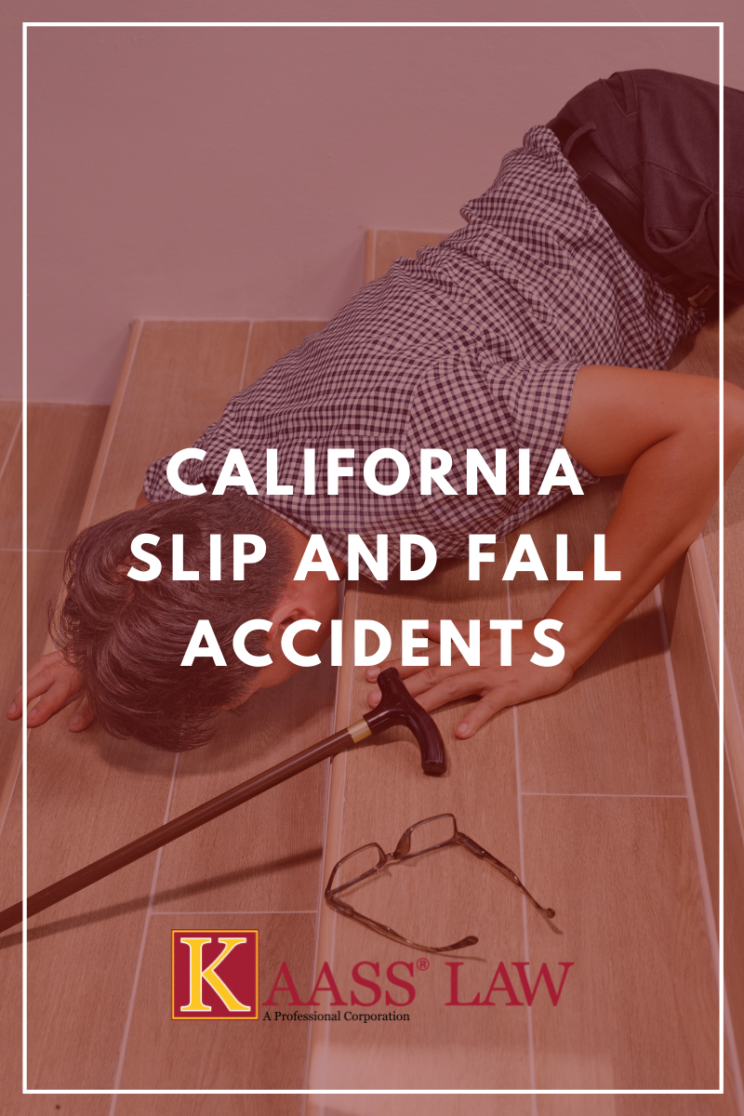Accidents happen all the time, though some people are definitely more prone to them than others. However, sometimes an accident can be completely out of your control and can even be the fault of others. There is a term that broadly captures all of these types of incidents in the legal world, namely “slip and fall.”
Premises Liability Accidents
A slip and fall accident falls under California premises liability laws. For an injured party to recover damages, the accident must have resulted from someone’s negligence. Hence, not all falls will necessarily lead to a slip and fall liability, but in a surprisingly large number of cases, they certainly can.
Responsible and Negligent Party
More specifically, someone is negligent and responsible for a slip and fall case in California if they:
- Knew, or through the execution of reasonable care and caution should have known,
- About a hazardous condition on the property they own or control, and
- They failed to repair, protect against, or provide enough warning of the condition.
Common Causes of Slip and Fall Accidents
As you may imagine, many factors can come into play in slip and fall cases. The most important factors tend to be those that we can link to what may have caused the slip and fall to recover damages. Some examples of these factors and causes are:
- Leaks
- Spills
- Uneven flooring
- Loose carpeting
- Uncovered or exposed cables and cords
- Broken furniture
- Failure to close off construction sites, and
- Failure to put up warning signs about known hazards in the area.
Who is Liable for Slip and Fall Accidents?
According to California law, people owe a duty of care to protect those who enter their property from harm. Duty of care applies to anyone who owns, leases, occupy or controls the property. However, it does not just apply to individuals; parent companies or insurers may also be liable to pay damages to people injured in slip and fall accidents in California.
Let’s explore a possible slip and fall scenario: Stephanie is out with her friends at a club, and she slips on someone’s spilled drink, injuring her head. This is a situation where there may be several possible liable parties, such as the promoter, the club owner, the parent company, the party’s insurers, and maybe even the club’s or promoter’s staff. As such, we can take many possible avenues in determining who is liable for a slip and fall injury, depending on the context of the situation.
Proving Fault in Premises Liability Cases
You need to know the four things that have to be established to prove that negligence led to your injuries in the slip and fall case. These four things are important to establish if you wish to recover damages:
- The defendant owned, leased, occupied, or otherwise controlled the property;
- The defendant was negligent in their use and maintenance of the property;
- You were harmed by slipping and falling on the property; and
- The defendant’s negligence was a major factor in causing the harm you suffered.
Once these four get established, we are well on our way to recovering damages for your slip and fall case. You are entitled to recover all compensatory damages that resulted from their negligence. Compensatory damages include:
- Medical Bills
- Lost Wages
- Lost Earnings Capacity
- Pain and Suffered
- Potential Punitive Damages
We can recover punitive damages for a slip and fall case if the defendant’s recklessness led to severe injuries or death or if the defendant deliberately destroyed evidence of their liability.
Statute of Limitation in Slip and Fall Accident Lawsuits
Although an injured party may be eligible to recover damages, there is a statute of limitation (“SOL”) to bring a slip and fall lawsuit. In California, the statute of limitations for slip and fall cases is two years from the accident date.
Many injured wonder what they must do to prepare for a slip and fall claim? The key is to show that the fall was the result of negligence. To prove that a third party was negligent, an injured party must collect evidence. Such evidence can include:
- Video footage of the fall
- Witness testimony and statements
- Doctor’s treatment notes and assessments
- Testimony from accident reconstruction experts
Los Angeles Premises Liability Attorney
If you or a loved one has sustained injuries resulting from a slip and fall, we invite you to contact us at (310) 943-1171 to speak to our California personal injury attorney today. We stand with our clients and ensure that all of the necessary evidence is collected and properly presented to ensure maximum compensation. Give us a call today to see how we can help.


Pingback:Swimming Pool Accidents: Causes, Effects and Compensation - KAASS LAW
Pingback:What Are Head Injuries Resulting From Slip And Fall Accidents - KAASS LAW
Pingback:Spinal Cord Injuries After A Slip And Fall Accident - KAASS LAW